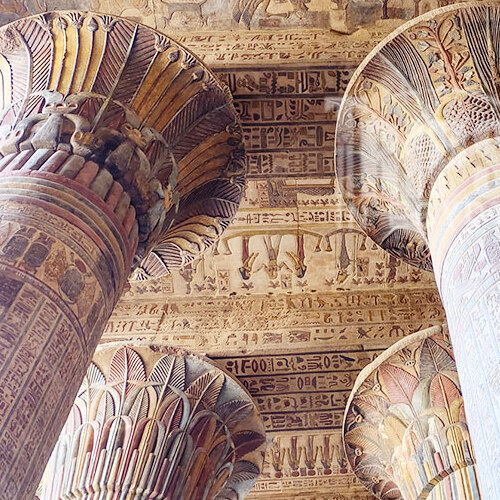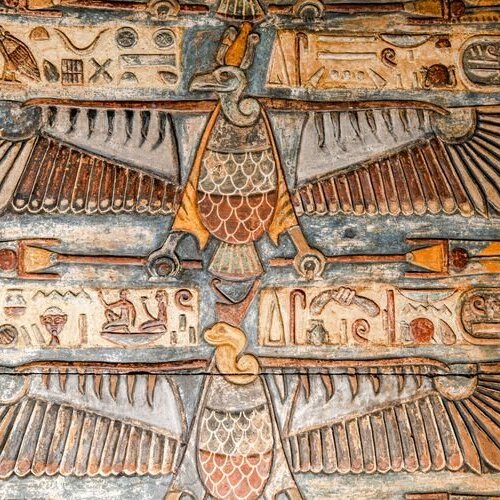No other nation in the world says ‘Welcome’ as often as the Egyptians, and every time, they mean it. While the ancient civilization of Egypt continues to amaze, contemporary Egyptians are equally remarkable.
Temple of Khnum
Unveiling the Mystical Temple of Esna
Nestled on the west bank of the Nile, 55 km south of Luxor, lies Esna, an agricultural town that’s a frequent first stop for cruise boats departing from Luxor. This town is renowned for the remnants of a mesmerizing Ptolemaic temple located right at its heart.
Historical Significance
The ancient name of Esna was Iunyn or Ta-Senet, also known as classical Latopolis. The temple, a relic from the Ptolemaic and Roman periods and among the last to be built in ancient Egypt, stands enigmatically in an excavation pit, nine meters below today’s ground level. It was a sanctuary dedicated to the ram-headed god Khnum and an array of other deities including Neith, Heka, Satet, and Menheyet.
Architectural Grandeur
Originally, the Temple of Esna would have mirrored the architectural grandness of the temples in Edfu and Dendera, but today, only the hypostyle hall remains. This hall was an extension by the Roman Emperor Claudius, enhancing the earlier structures. The oldest part visible today is the west wall, the original façade of the temple, showcasing reliefs of Ptolemy VI Philometer and Ptolemy VIII Neos Philopator. The portion we see today represents only about a quarter of the original structure’s size.
Intricate Decorations
Remarkably, the roof of the hypostyle hall still stands, supported by 24 columns with distinct floral capitals. These columns are adorned with texts that describe the town’s religious festivals and several Roman emperors appearing before the gods. Fascinatingly, one column depicts Emperor Trajan dancing before the goddess Menheyet. Another temple, referenced in the texts and excavated at Kom Mer south of Esna, adds to the historical richness of the area.
The north wall of the hypostyle hall displays a traditional scene of the king netting wildfowl, symbolizing the triumph over evil spirits. The east wall features a cryptic relief of a calendar dedicated to Khnum, with hieroglyphs predominantly of crocodiles and rams. A small chamber built into the east wall near the entrance, possibly a priest’s robing room or a chapel, echoes a similar feature found in the Edfu Temple.
The south wall, adorned during the reign of Septimus Severus and his sons Geta and Caracalla, depicts them before several divinities, alongside calendars on the upper parts of the north and south walls.
A Celestial Ceiling and an Enigmatic Courtyard
The ceiling of the hypostyle hall is a blend of Egyptian astronomical figures and Roman zodiac signs, symbolizing a confluence of cultures. The temple’s façade, typical of the period, features screen walls inset with columns and reliefs of Roman Emperors before Upper Egyptian deities. A frieze of Nile gods adorns the façade’s base.
In the courtyard, a statue of the relatively obscure lion-headed goddess Menheyet or Menhyt, identified as Khnum’s consort at Esna, stands as a silent sentinel of the past.
The Temple of Esna, with its rich tapestry of history, architecture, and mythology, offers a captivating journey through time, inviting visitors to unravel the mysteries of this ancient Egyptian marvel.
Created On March 18, 2020
Updated On Aug , 2024



